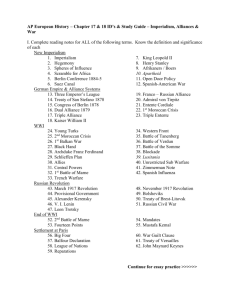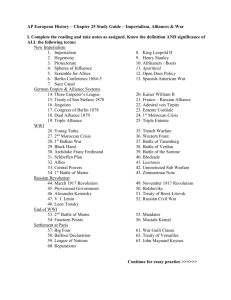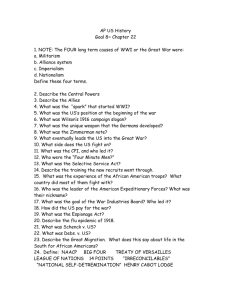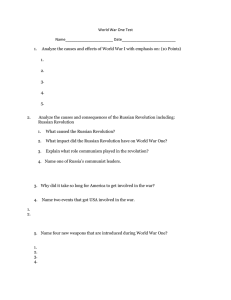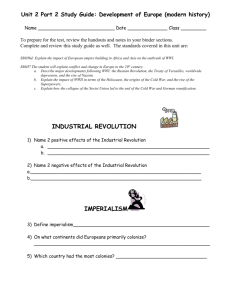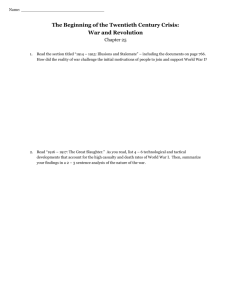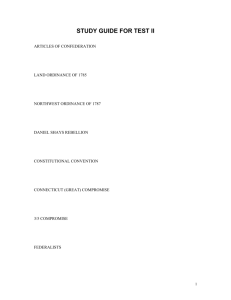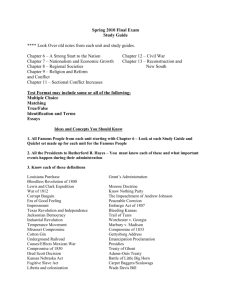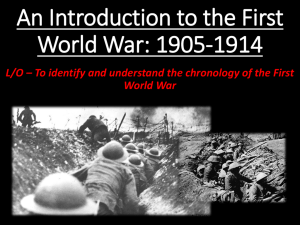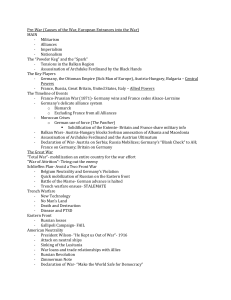Mobilization on the Home front
advertisement
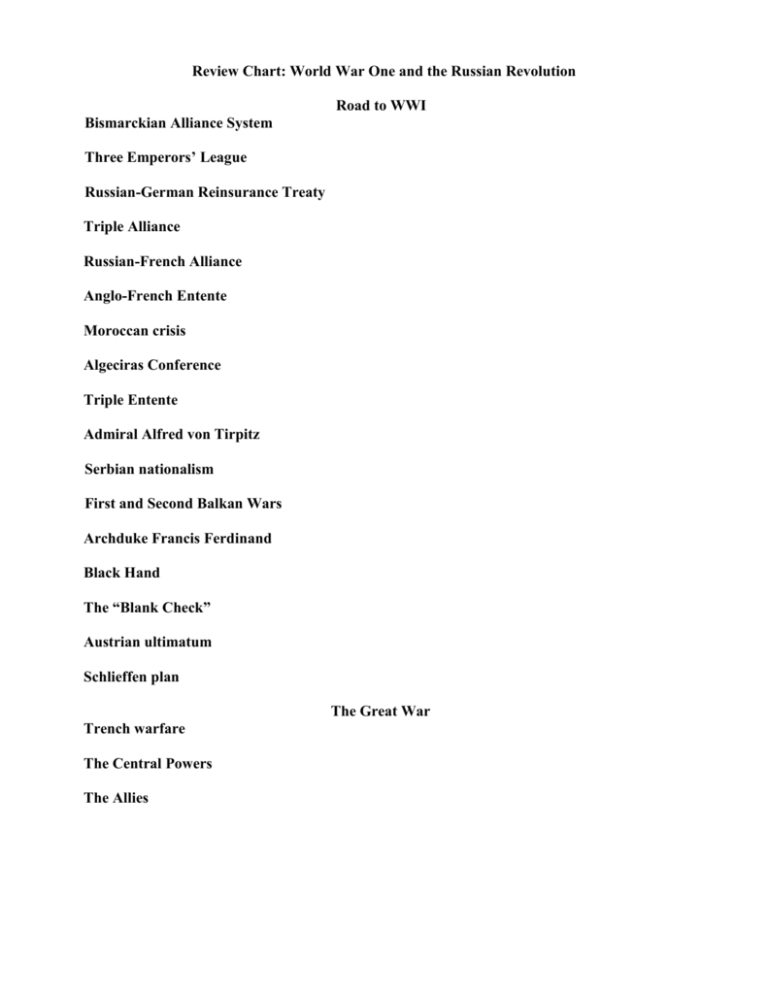
Review Chart: World War One and the Russian Revolution Road to WWI Bismarckian Alliance System Three Emperors’ League Russian-German Reinsurance Treaty Triple Alliance Russian-French Alliance Anglo-French Entente Moroccan crisis Algeciras Conference Triple Entente Admiral Alfred von Tirpitz Serbian nationalism First and Second Balkan Wars Archduke Francis Ferdinand Black Hand The “Blank Check” Austrian ultimatum Schlieffen plan The Great War Trench warfare The Central Powers The Allies Battle of Verdun Battle of the Somme The Western and Eastern Fronts Battle of Tannenberg Paul von Hindenburg and Erich Ludendorff New Military Technologies U-Boats Lusitania Mobilization on the Home front Expansion of government power during the War Gallipoli Campaign War in N. Africa Zimmermann Telegram The Russian Revolution The Duma Peter Stolypin Rasputin March (February) Revolution Mensheviks, Alexander Kerensky and the Provisional Government Petrograd Soviet Bolsheviks and Vladimir Lenin Leon Trotsky Army Order No. 1 The Kornilov Affair The November (October) Revolution How the Bolsheviks maintained control Treaty of Brest-Litovsk, March 1918 Russian Civil War The Archangel Expedition “War Communism” Ending the War Easter Rebellion, 1916 Weimar Republic Armenian genocide Sykes-Picot Agreement Balfour Declaration Treaty of London Fourteen Points Self-determination Paris Peace Conference, 1919 The Treaty of Versailles The Big Four War Guilt Clause, Article 231 Reparations League of Nations Mandates John Maynard Keynes, The Economic Consequences of the Peace, 1919 Modernism Art Dadaism Cubism Surrealism Notable artists of this period and their contributions Literature Characteristics of this period Notable writers of this period and their contributions Music Characteristics of this period Notable composers of this period and their contributions Architecture Functionalism Bauhaus Psychology New Physics
